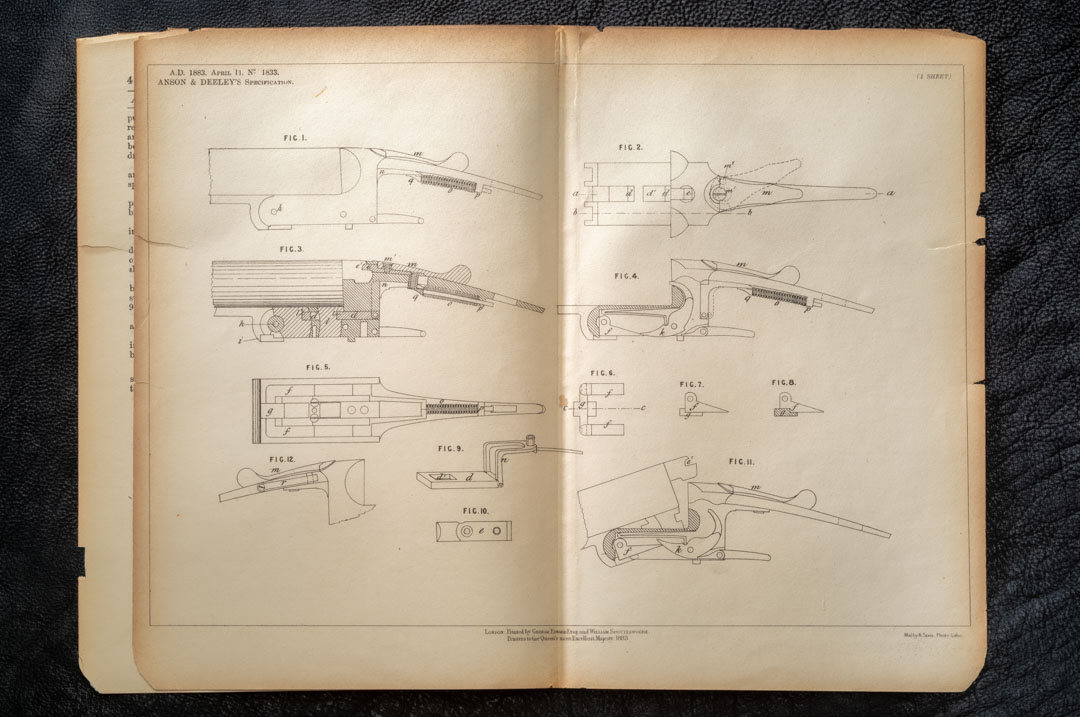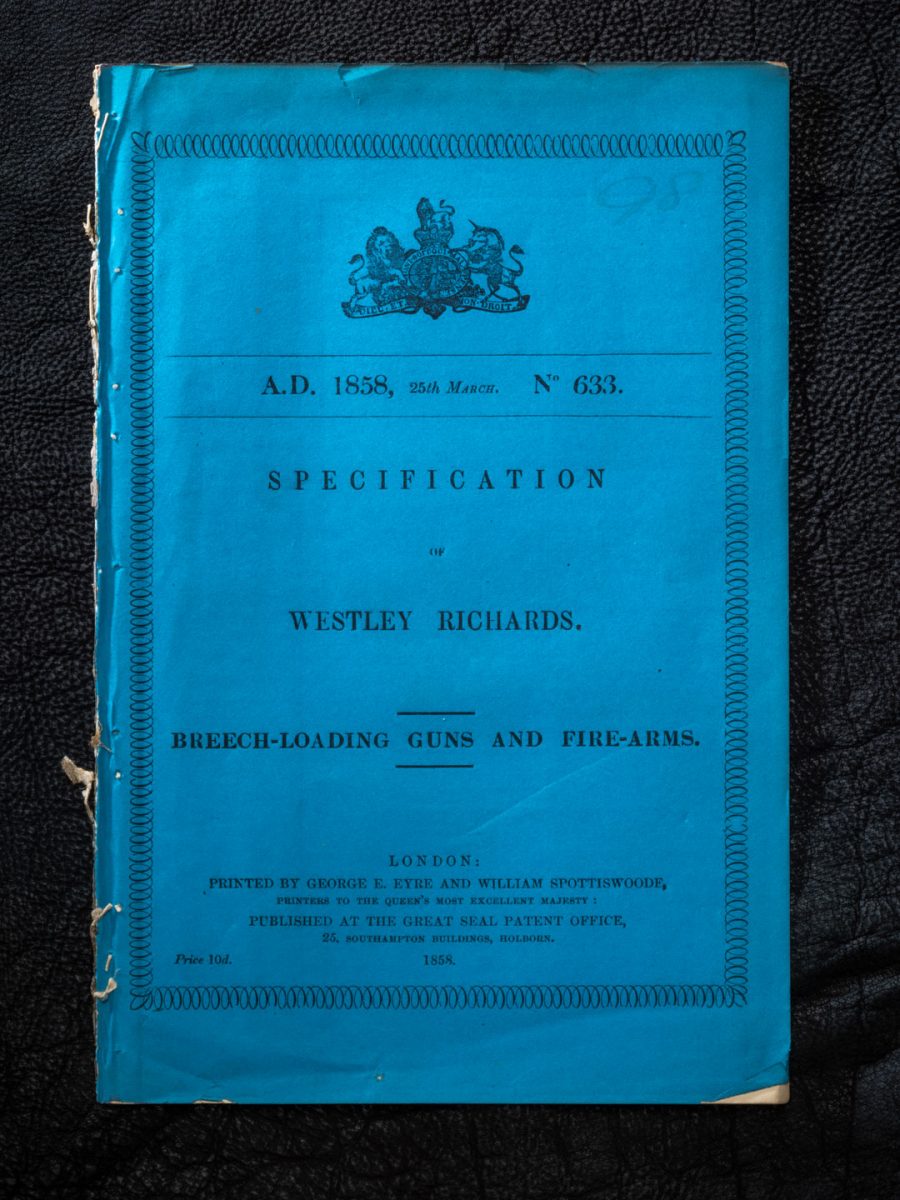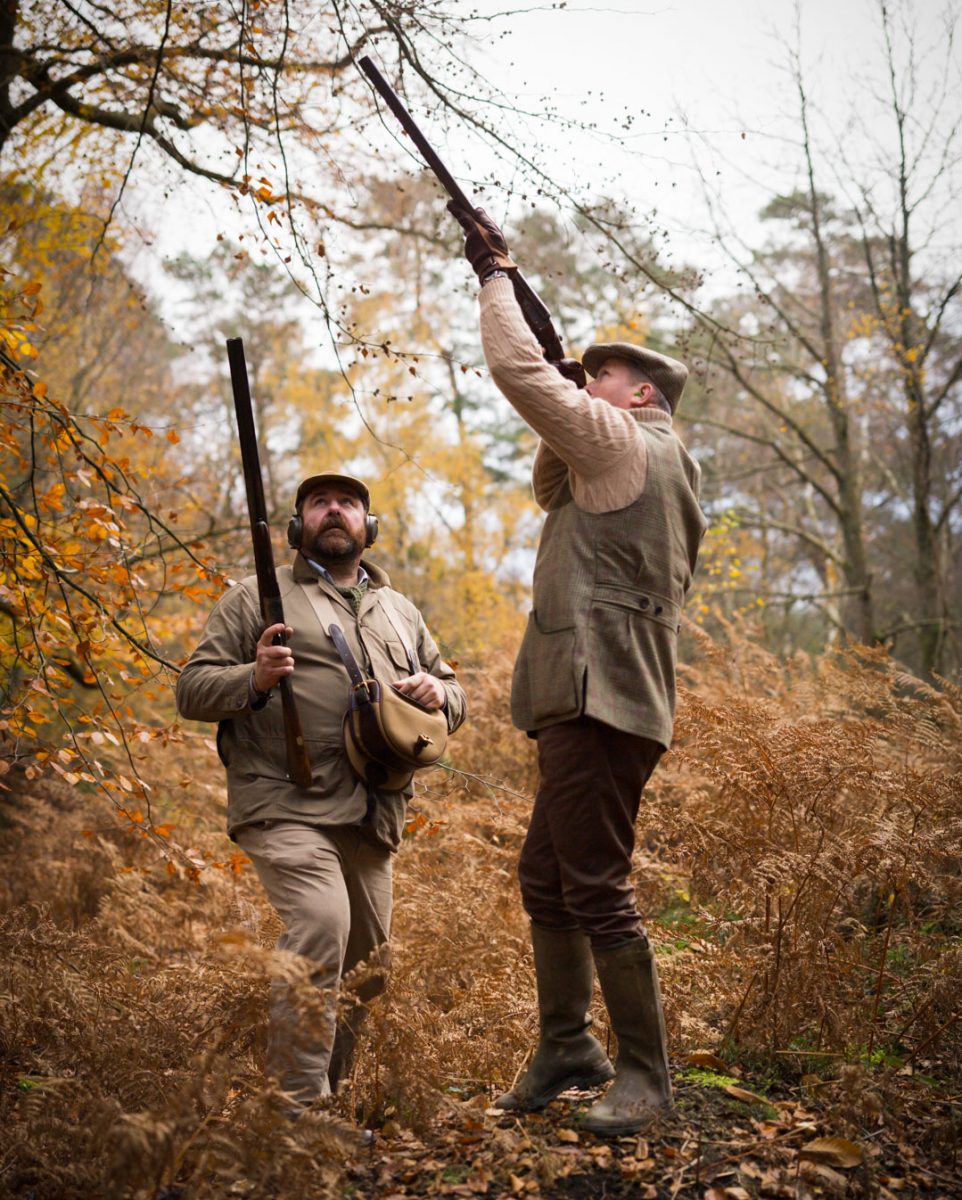One such alteration to the original design is encapsulated in Patent No.1833 of 11th April 1883 by the originators of the concept, William Anson and John Deeley. It is known in the trade as a 'double dog'.

The patent application refers to John Deeley as a 'Gun Maker'. The same title is attributed to William Anson. Both are described as 'of Birmingham' and the gist of the patent is laid out as, 'to improve (the 1875 patent) in the following manner: We make the two dogs, or lifters, in one solid piece by connecting them with a cross bar, which cross bar forms a bridge across the slot in the breech action nearly close to the joint pin, the bridge will also span over the lump of the barrels, when the breech is closed, the forend will (as in our above mentioned patent) hold the 'dog' or 'lifter' in position in the act of cocking, the lump will not form any part of the cocking arrangement but will merely turn on the joint pin as in ordinary guns'.
The latter part of the description is important, as the 1880 Greener Facile Princeps patent uses a stud on the lump to effect cocking, using a similar, wish-bone shaped, one-into-two lever as this patent describes. The non-operational status of the lump delineates the two concepts sufficiently to avoid litigation.

We should remember that Greener and Westley Richards became engaged in a costly law suit regarding the accusation of patent infringement of the original Anson & Deeley patent, when Greener started making the Facile Princeps (Greener won).
The double dog, from above, looks rather like the letter 'E'. The extremities are the actual cocking 'lifters', which extend into the action body and come into contact with the hammers, lifting them to the 'cocked' position, where they are held in place by their respective sears.
The middle limb of the 'E' projects from the knuckle. When the barrels drop, that is the point of contact which, when depressed, raises the two 'lifters', as the barrels hinge downwards, rotating on the hinge pin.
It was designed as a refinement of the original idea and was used by Westley Richards and others for a time but its popularity appears to have waned in the early 1900s. Westley Richards reverted to the use of conventional, individual, lifters for each lock. They are simpler and ergonomically better; tension in each limb is transferred directly in the direction of the hammer, whereas the double-dog applies pressure transversely, through a weaker section of cross-limb, before it acts on the lifter part.

These areas are the ones where cracks or failures occur. When they did fail, the problem of making a new double dog is that it is a far more complex shape to file-up than a conventional lifter (which almost never fails anyway).
The old KISS principle appears to be at work here (keep it simple stupid). The original idea was effective, simple and direct, the 'improvement' was more complex, less robust and less direct. Trial and error, time and experience, directed gun-makers back to the earlier concept, confirming that as being the superior one.
As design, and a conceived refinement, the guns built with double dogs tend to be higher grade models, very well made of fine materials. Given that large numbers of them are still working perfectly, many lurking inside guns with their presence totally unknown to their owners, shows how clever and skilled Victorian gunmakers were. They come to our attention only when one fails, which is hardly ever, but more often than do conventional cocking-dogs.
Every Westley Richards boxlock Anson & Deeley gun or rifle made today uses conventional cocking dogs. The 'double dog' is best seen as an interesting historical experiment.
The Explora Blog is the world’s premier online journal for field sports enthusiasts, outdoor adventurers, conservationists and admirers of bespoke gunmaking, fine leather goods and timeless safari clothes. Each month Westley Richards publishes up to 8 blog posts on a range of topics with an avid readership totalling 500,000+ page views per year.
Blog post topics include: Finished custom rifles and bespoke guns leaving the Westley Richards factory; examples of heritage firearms with unique designs and celebrated owners like James Sutherland and Frederick Courtenay Selous; the latest from the company pre-owned guns and rifles collection; interviews with the makers from the gun and leather factory; new season safari wear and country clothing; recent additions to our luxury travel bags and sporting leather goodsrange; time well spent out in the field; latest news in the sporting world; and key international conservation stories.



 Enquire
Enquire
















